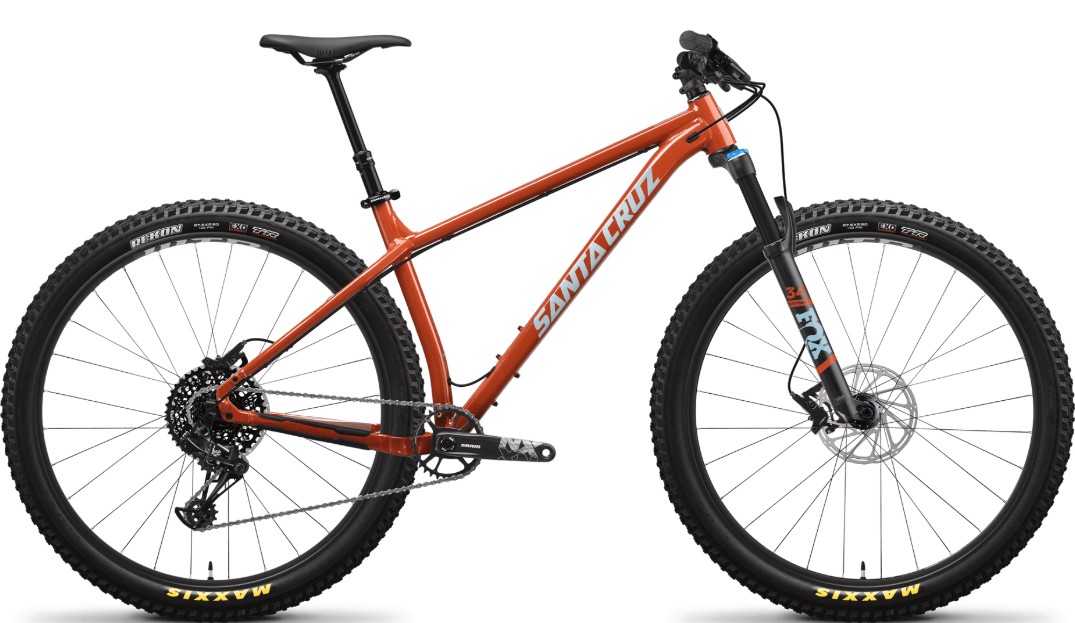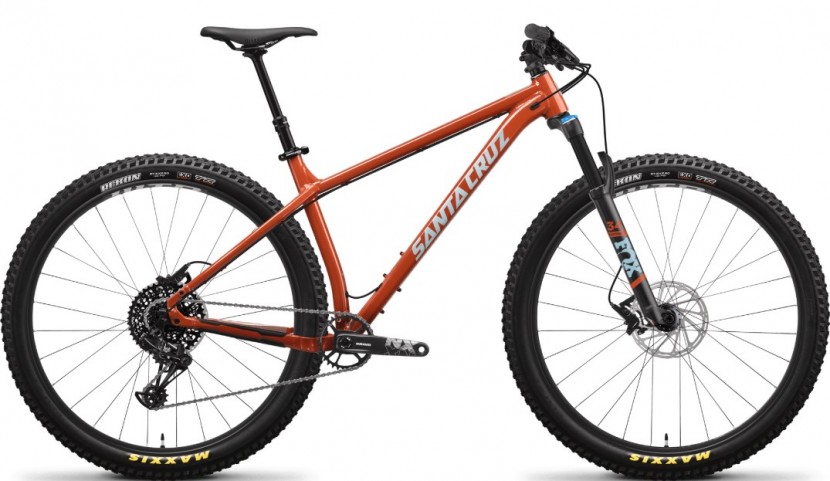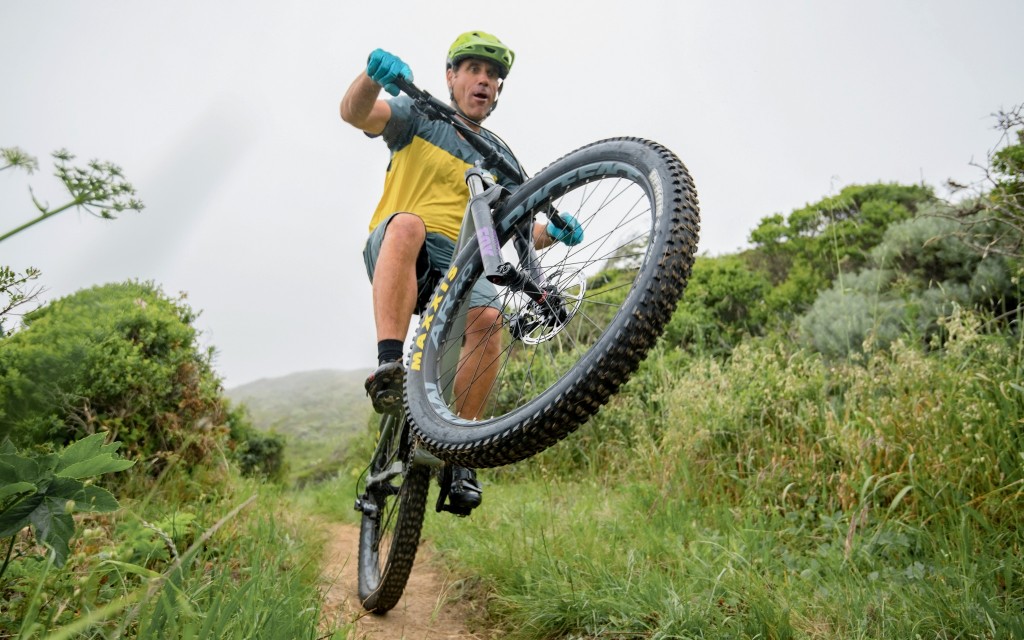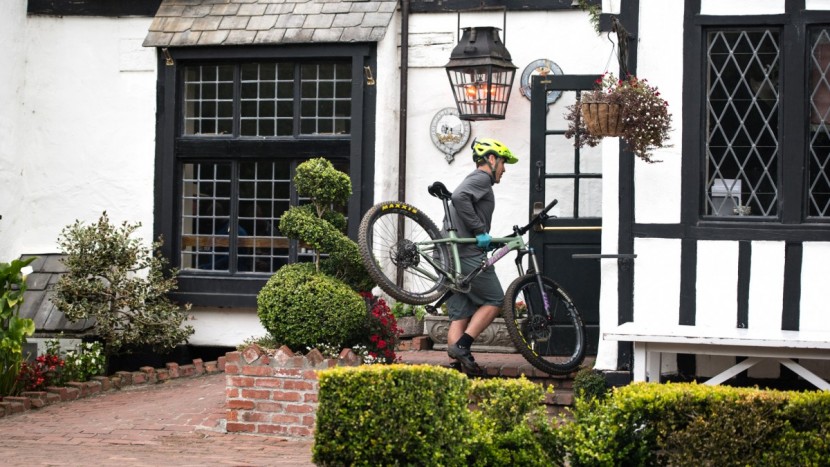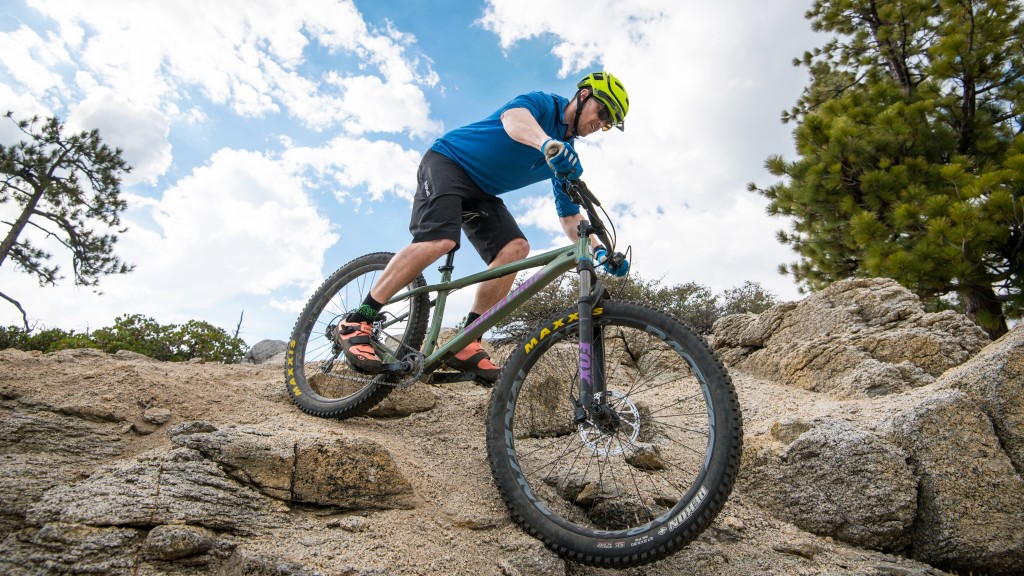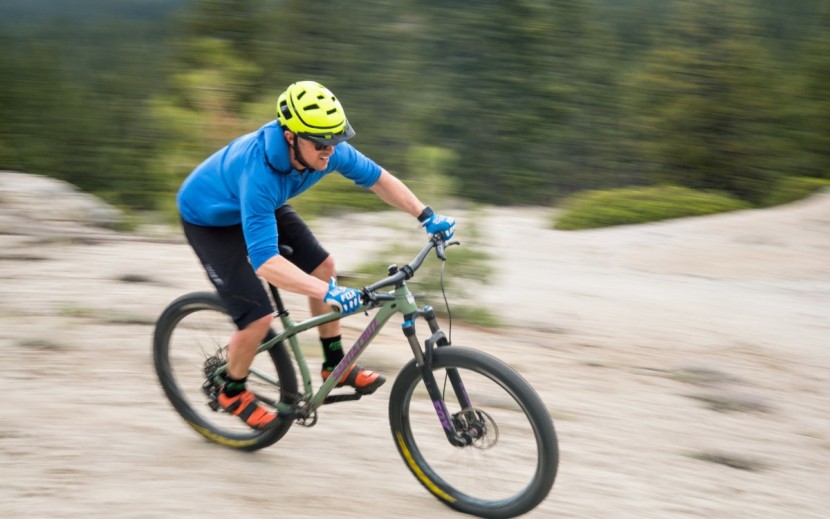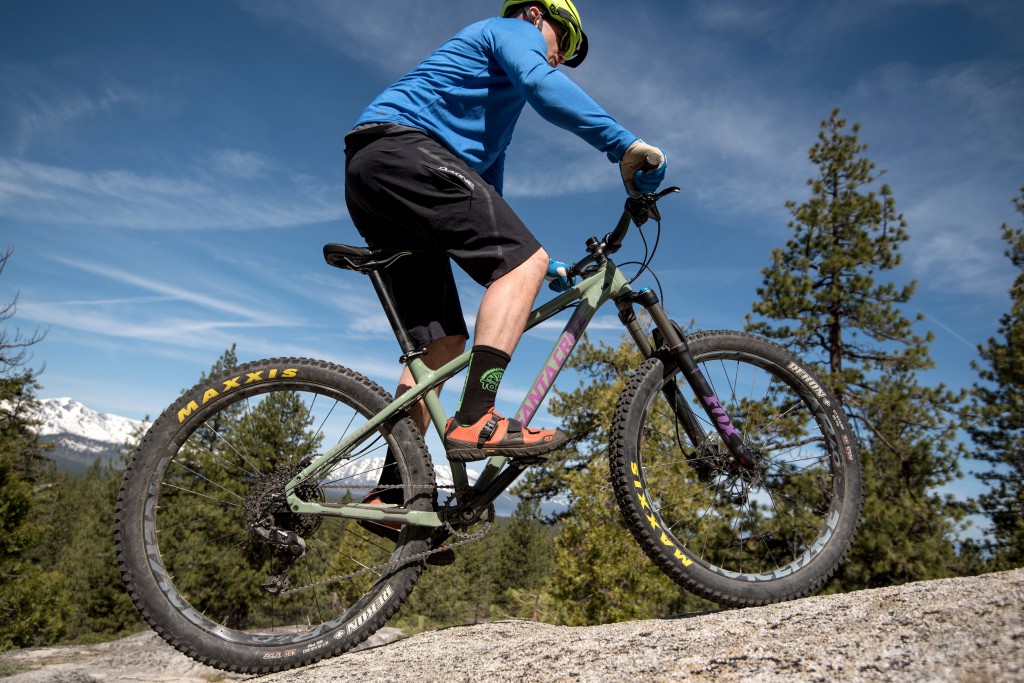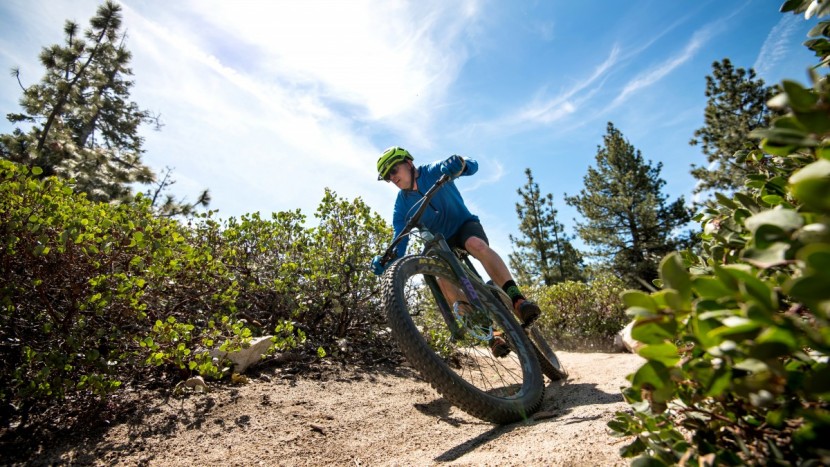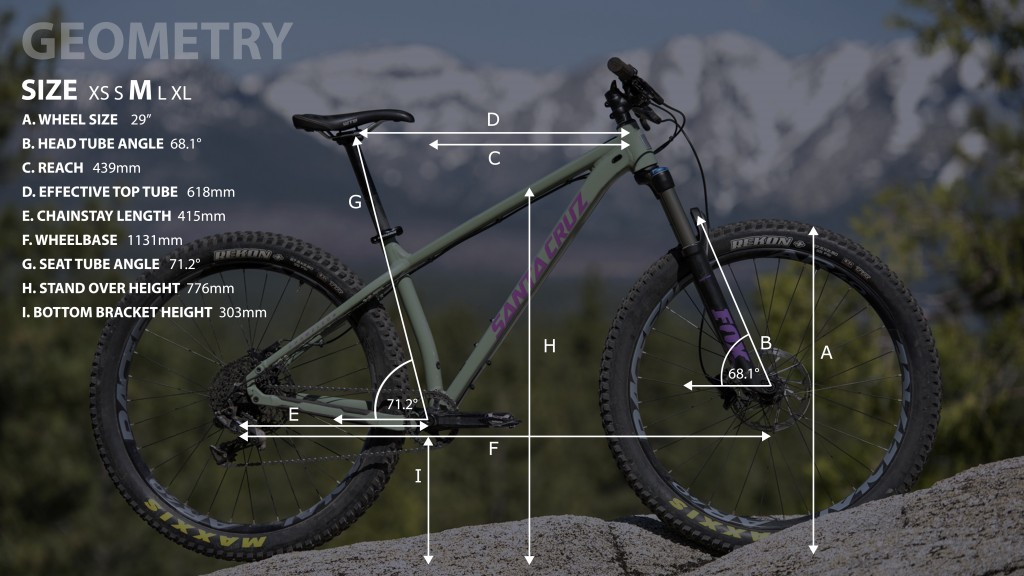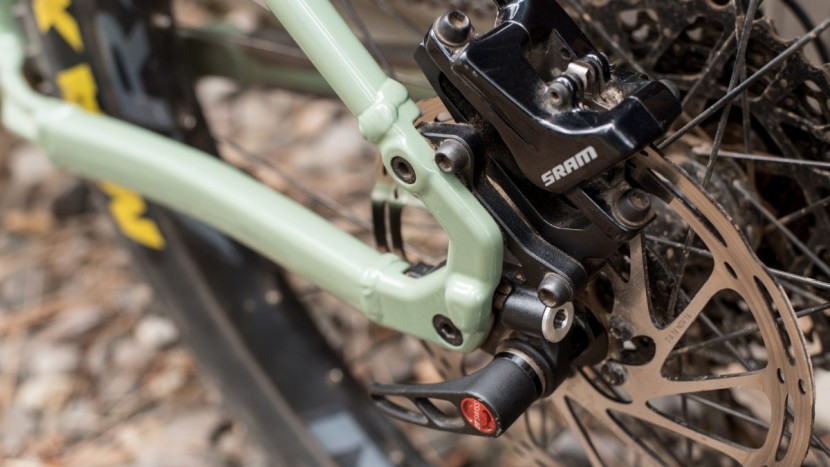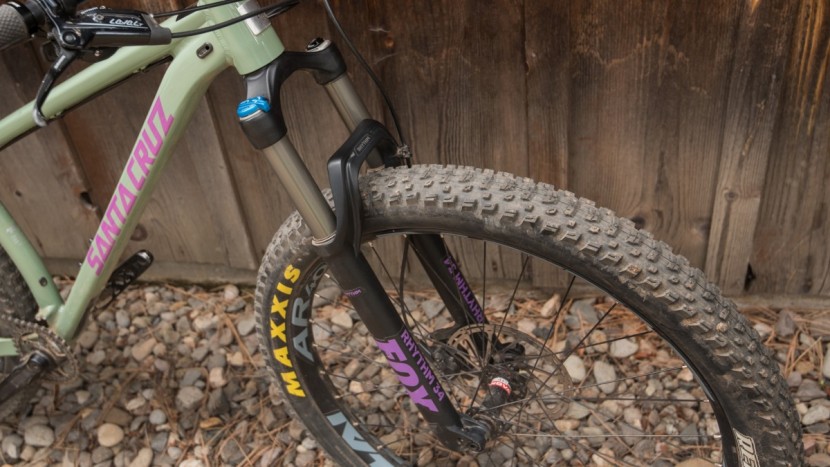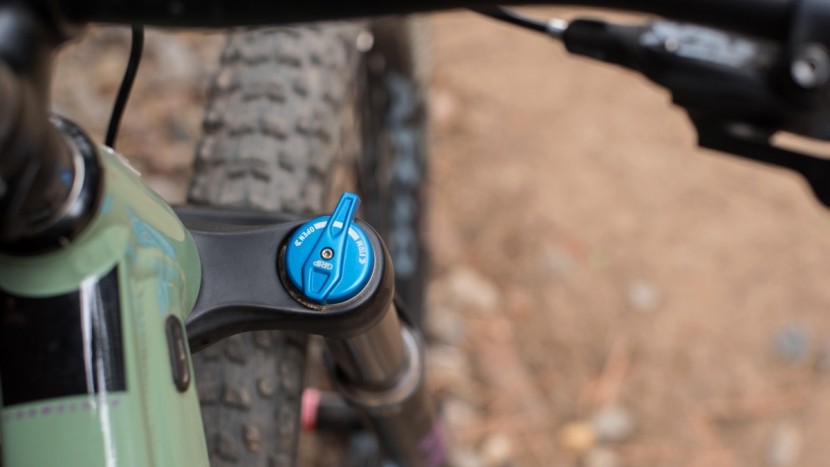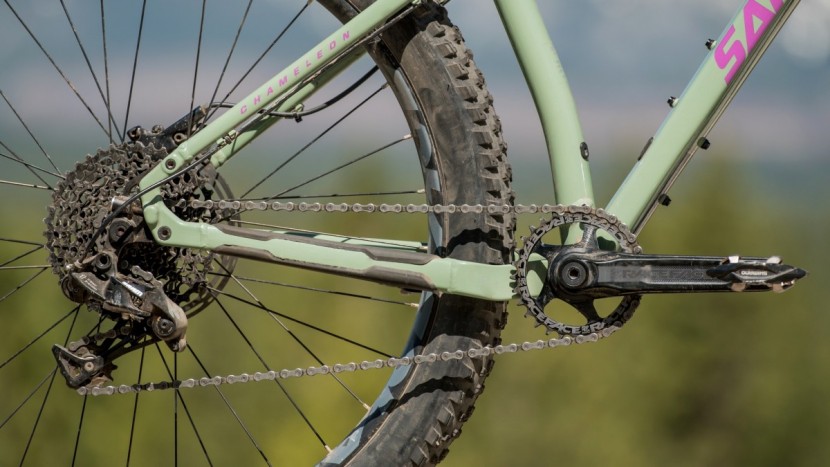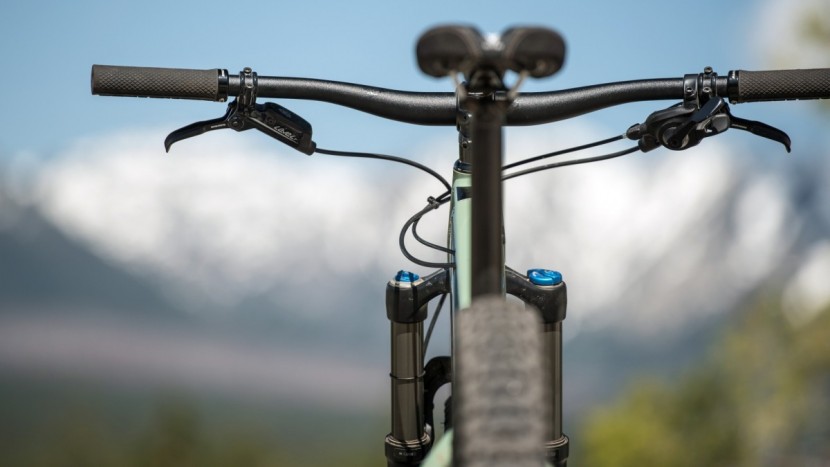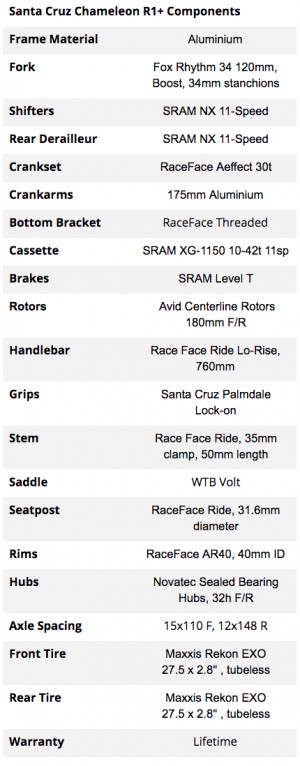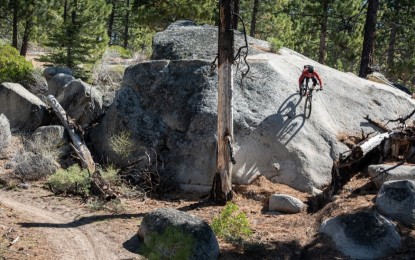The Chameleon is a shredder for those seeking a spritely ride with excellent cornering and sharp steering. You can manual through every dip and bounce over every bump, smiling ear to ear. While the Chameleon is a serviceable climber, the Specialized Fuse is more comfortable and well-rounded.
Santa Cruz Chameleon R1+ Review
Our Verdict
The Chameleon is a shredder for those seeking a spritely ride with excellent cornering and sharp steering. You can manual through every dip and bounce over every bump, smiling ear to ear. While the Chameleon is a serviceable climber, the Specialized Fuse is more comfortable and well-rounded.
Our Analysis and Test Results
Updated Build Kits For 2019
The Santa Cruz R1+ that we tested in 2017 is no longer available. That build kit sold for $1799 with a rigid post and NX 1x11 drivetrain.
Fear not, we got our hands on the 2019 Chameleon R+ to see how it handles in the wild. While it is more expensive compared to our test bike, it has the same fork and a similar level of components. Short answer: it is still impressive. The 2019 R+ build runs a dropper post, an NX Eagle drivetrain, and Level TL brakes. This is a significant upgrade over our test bike. The dropper post really enhances the fun factor on this bike and allows you to slap it around even harder than before. The wide-range NX Eagle drivetrain enhances climbing abilities thanks to its breezy 50t drivetrain.
2017 Analysis and Test Results
Four professional OutdoorGearLab bike testers spent six weeks hammering five hardtail mountain bikes on a variety of terrain. The Santa Cruz Chameleon R1+ took on the Specialized Fuse Expert 6Fattie, 2017 Trek Stache 7, 2017 Kona Honzo AL/DL, and the 2017 Salsa Woodsmoke 29 Carbon NX1. Get all the details of that test in our hardtail review. If you'd like to see these bikes stack against every other trail bike we've tested, see our comprehensive trail mountain bike review.
Fun Factor
The Chameleon is a fun bicycle, plain and simple. This bike has been in the Santa Cruz lineup since 1997 and has always been the more fun and aggressive option when compared to their race-oriented hardtails. The newest iteration of the Chameleon is no different. This bike has an undeniable dirt jumpy personality and puts riders in an aggressive position to get rowdy. When it comes to pure trail riding, it is competent and doesn't force riders to work too hard.
The Chameleon offers an agile ride despite what you might expect from a glance at its geometry chart. This frame has one of the longest wheelbases in our test class, but you wouldn't know it by riding it. The Chameleon feels extremely short and agile and responds very well to rider input. Pull up on the bars while hanging your rear off the back and you can find yourself in a manual in a hurry. Bunny hops are easy if you can get the rigid seat post out of your way.
The Maxxis Rekon 27.5+ tires are critical to the fun-factor of the Chameleon. Cornering will be discussed at length later in this review. However, the well-defined shoulder knobs of these tires are essential. If railing corners is your idea of a good time, the Rekon tires allow you to feel the edge and ride it. Those who find happiness in drifting or sliding through corners can dip the Chameleon beyond the defined corner knobs and get properly wild.
Is going fast fun? Yes, it is. The Chameleon handles well at speed but is more skittish than the Specialized Fuse in its short chainstay setting. When you lengthen the backend, it is more composed thanks to the expanded wheelbase and semi-slack head angle. The lack of a dropper post is a major buzzkill aboard this bicycle. When approaching a fun corner or object you want to launch, boost, or bonk, the rigid post is a huge hindrance — attempting to hop too high results in a saddle hitting your nether regions before you get the bike to a safe clearance height. At Mach speeds, riders are required to dial the speedometer back a hair due to the sketchy feeling of being too high up for comfort. Yes, adding a dropper post to a bike can be expensive, but it is worth every penny as it could transform this bike into a full-fledged party wagon.
The joyful Chameleon rates fairly low in fun factor when compared to a broad selection of the best full suspension trail bikes in the world. If you are looking for a bike to go on long trail rides, the Specialized Fuse is more fun at a 5. The balanced geometry and longer running length make it more comfortable in a much wider range of situations. Riders who want to pound out the miles should think about one of our full suspension options. A bike like the Santa Cruz Tallboy as the squishy rear end pays dividends on long rides.
Downhill Performance
The Chameleon is an interesting animal, reptile to be specific, when it comes to downhill performance. This bike is easy to pilot, requiring relatively low rider input and body language when charging. The Santa Cruz maintains its composure and fun personality at speed but appears to be disturbed more easily by chop and gnar.
Attack position on this olive green fun-machine sets riders up to succeed on the descent. The long top tube and medium-long reach provide plenty of space to shimmy forward or back as the trail requires. When the going gets steep, it is easy to maintain a neutral body position. Without beating a dead horse, the lack of a dropper post is a serious detriment to downhill performance. It forces riders into an upright position, which is the opposite of desirable. This lacking specification is significant, but we will do our best to refrain from revisiting this topic in too much detail.
The Chameleon carries speed and maintains its ride characteristics on the descent. Handling remains crisp and responsive as riders build speed. The Fox Rhythm 34 fork keeps the front end under control and offers a super plush feel. The Maxxis Rekon 2.8-inch tires inspire serious downhill confidence. Cornering aside, when cutting back and forth across trails to access different lines and features the Chameleon is confident. Sudden movements don't rattle these tires. Riders are persuaded to pump, slash, and boost their way down the trail. Riders who like to turn the trail into a playground will feel like this bike was designed specifically for them.
Multiple testers report that choppy and chunky lines shake the Chameleon. Yes, it is a hardtail, and it is going to be rough, but not all hardtails are created equal. The Specialized Fuse is our favorite descender and is also a 27.5+ bike. The Fuse's longer and more balanced wheelbase and its 3.0-inch tires likely make the difference. They take the edge off the chunk more effectively than the 2.8-inch tires on the Santa Cruz. The Chameleon's 2.8-inch tires require a slightly higher air pressure. Larger aggressive riders are pumping these tires over 22 PSI to avoid rolling them over in corners. Less aggressive riders should stick with air pressure in the mid to upper teens. Dialing tire pressure back a few PSI goes a long way to help counteract the harshness. Regardless, the Chameleon is comfortable being aimed into treacherous terrain. Soft elbows and knees go a very long way in taking the harsh feel out of a hardtail. This bike is no different.
The Specialized Fuse felt more stable on the downhill and provides less harsh feedback thanks to the 3.0-inch tire. The longer running length makes it feel less twitchy than the Chameleon, which comes in at the bottom of the chart for descending skills. This is relative, to bikes like the Yeti SB5.5. Tons of salt folks. The more composed and very capable Fuse gets a 3 of 10. The 110mm of travel on the Santa Cruz Tallboy is far more confident than the hardtails on the descent, earning a 5.
Climbing Performance
The Chameleon is an adept climber that allows you to ascend painlessly. While it isn't the most efficient bike in the test, the plus-sized rubber gives you a nice warm safety blanket of traction. On loose soil, gravel or rocks, the plus tires allow for downright scary amounts of traction. The lower tire pressure you run, the better grip you get. Going too low though can lead to a bouncy feel when pedaling uphill, especially at a high cadence. The 2.8-inch tires are obviously narrower than 3.0-inch tires and don't have quite the same level of traction. However, narrower tires produce less drag and could save you some valuable energy on a long climb.
The power transfer is reasonably efficient, although the Chameleon is far from a cross-country machine. The seat tube angle on this aluminum lizard measures 71.2-degrees, which is the slackest in our test. Slack seat tube angles result in less efficient climbing as they set the rider back behind the bottom bracket/cranks. The further behind the pedals that the rider is positioned, the harder it is to get power into the drivetrain. Riders who are on the top end of a frame size are forced to raise the seat post, and that increases the negative effect of a slack seat tube. Regardless, the target buyer of the Chameleon is likely more focused on the playful and jumpy attitude rather than pedal efficiency.
As we've mentioned, the Chameleon has adjustable dropouts to run the bike a short or long setting. We tested it primarily as it came to us, it in the short position. We found the short position caused riders to loop out a substantial amount. The combination of the shorter chainstays, slack seat tube angle and long top tube puts a lot of weight over the rear axle when climbing and causes the front end to rise. We also tested the bike in long mode. The added length effectively counteracts this sensation. However, one tester thought the bike felt “dead” with the added length into the rear.
While the 3.0-inch tires can feel bouncy at a higher cadence, the added traction is critical. The Fuse is also significantly less harsh over rocks. The harsh rear end on the Chameleon is worse in short-mode. High-end full suspension bikes are better climbers than more aggressively designed hardtails these days as their rear linkages effectively reduce pedal strokes from activating suspension bob. And a lot of them are lighter.
Cornering, Handling and Body Language
The Chameleon rails corners just as you would expect a dirt jump-inspired hardtail would. Very well. A shorter wheelbase mated with aggressive mid-fat tires is a recipe for superb grip. Add the lowest bottom bracket of the test into the equation, and you get a very planted bicycle through the bends.
We discussed the Chameleon's sharp handling in the downhill section, and those skills translate exceptionally well to its cornering abilities. A 35.0mm clamp 760mm handlebar with a short, 50mm, stem allows for efficient steering. Minimal body language is required to get the Santa Cruz to work for you. A quick dip of the shoulders or snap of the wrist goes a long way to maneuver this puppy. One tester described the handling and cornering as so sharp that it was close to “skittish.” While the term skittish can easily be construed as a negative, it is an example of super-responsive handling. The Chameleon is not the kind of bike to wear you down trying to keep it under control. It is a good listener. Once again, the lack of a dropper post keeps the rider a little more upright than is preferred.
Uphill cornering and switchbacks typically require a little bit of a game plan. The Chameleon makes it easy. While you need to be thoughtful about where the front wheel is aimed when navigating an uphill switchback, a quick blast of the pedals can get you out of trouble. The superb traction on a plus bike paired with the easy-to-drive Chameleon provides a calm and stress-free experience, even during a grueling climb.
The Maxxis Rekon+ 2.8-inch tires provide stable and predictable contact points. Among mid-fat tires, the Rekons are very impressive in terms of defined shoulder knobs. The amount of mass is comparable to a regular 29-inch bike, so anticipation and proper setup are essential when entering corners. Regaining speed is difficult aboard 27.5+ bikes, and a clean entry into the corner is very helpful. There is a little more of a margin for error aboard the Chameleon when compared to the Kona Honzo or Salsa Woodsmoke given the extra rubber on the ground.
Frame Design
Santa Cruz makes the Chameleon out of good old-fashioned metal. Aluminum to be exact. We measured the head tube angle to 68.1-degrees with the stock 120mm fork. This head tube angle is middle-of-the-road among our test bikes and works on an aggressive hardtail. The effective top tube is a long and measures 618mm, and the reach is the second longest in our test measuring a spacious 439mm. The Chameleon features a slack 71.2-degree seat tube angle. This bike has adjustable dropouts, and we tested this bike almost exclusively in the short position. Our measurements reflect this. The 415mm chainstays pair with the previously mentioned top tube measurement to create the second longest wheelbase in our test at 1131mm.
This bike sports 15x110mm front and 12x148mm rear Boost spacing. The Chameleon has adjustable dropouts as well as the option to run a single speed setup and the popular 1x11 drivetrain, i.e., one chainring by eleven cassette cogs. It's even compatible with a front derailleur for the surviving fans of the 2x drivetrain. This bike has the option to run 27.5+ tires up to 3.0-inches or 29er tires up to 2.5 inches. Internal routing for a dropper post and rear derailleur are a nice touch for a super clean finish.
Build
Featuring an interesting blend of mostly highlights, and one very notable low-light, the Chameleon wears a solid build kit. Components are largely appropriate for the aggressive trail application, and the bike doesn't feel under gunned.
Fork
Santa Cruz outfitted the Chameleon with a Fox 34 Rhythm fork with 120mm travel. We are unanimously impressed by this fork which features an adequately stiff chassis and a plush and supple stroke. The GRIP damper is easy to use, but we recommend leaving that sucker wide open at all times.Wheels and Tires
The Chameleon rolls on a set of chunky Race Face AR40 rims with a nice wide footprint. These Race Face hoops are laced to Novatec 711/712 hubs. These hubs provide reasonably quick engagement. However, they have been the source of some frustration on previous test bikes and require frequent tightening as the hubs loosen on their axle.The Maxxis Rekon+ 27.5x2.8" tires enable riders to get down and dirty on the Chameleon. This set of rubber is our favorite width among mid-fat, aka plus, sizes.
Groupset
The Chameleon is powered by a SRAM NX1 drivetrain. NX1 is commonplace on bikes in this price point and provides reliable performance even if it isn't the crispest performer. A 30x42-tooth gearing is comfortable grinding uphill and offers a large range for flying downhill.SRAM Level T brakes keep the rider under control. These two piston brakes are effective and simple, providing riders with a reach adjustment.
Handlebars, Seat and Seat post
The Chameleon has a rigid seat post, as we've mentioned. This ride-hampering specification is our primary gripe with the build kit.A RaceFace Lo-rise handlebar with a 35.0mm clamp steers this aluminum monster. The 760mm width is a happy medium for most riders, but certain folks may consider going a hair wider. The bars connect to a short-mid length 50mm stem to offer the sharp handling of a short stem without cramping the rider.
Build Options
We tested the higher end of the two 27.5+ models of the Chameleon. Our
The R1 kit also retails for $1,999. It's essentially the same build kit as our test model but dons regular 29-inch wheels. Those looking to keep the fun ride, but ditch the extra rubber, will be stoked on this model.
The D+ kit is the step down from our test model with 27.5+ tires. This build features a RockShox Recon Silver RL fork, the same NX drivetrain, and downgraded SRAM Level brakes. Those looking to save a few dollars to upgrade to a dropper may be interested in this model.
Value
The $1,999 price tag on the aluminum-bodied Chameleon R1+ is within the realm of reason. It is a substantial chunk of change, but this bike backs it up with its performance. In addition to performance, the Chameleon is versatile and gives riders options in terms of wheel size, dropout length, and drivetrain choice.
Suggested Upgrades
While the Chameleon R1+ is no doubt rippable straight out of the box, there is one significant upgrade that would enhance your ride. Add a dropper post. While this was once an expensive upgrade, a bunch of manufacturers are producing adjustable posts now, and prices range from the $160 range to $450 and up. This upgrade would have awesome ride benefits.
Another (minor) suggestion might be considering a slightly wider bar. Switching to a 770 or 780mm doesn't sound like a huge difference compared to the stock 760mm bars, but they would no doubt enhance the experience. While we are stoked on the Rekon's, it would be a frighteningly fun experience to try mounting some ultra-aggressive Maxxis Minion DHF/DHR's to this party sled.
Conclusion
The Santa Cruz Chameleon is back and better than ever. This rig provides high-end performance at a reasonable price point. Downhill capabilities are great, climbing is solid, and the fun-factor is sky-high. Riders looking for a fun, versatile, performance-oriented, bike that can run different wheel/dropout/drivetrain configurations will appreciate this transforming bicycle.


